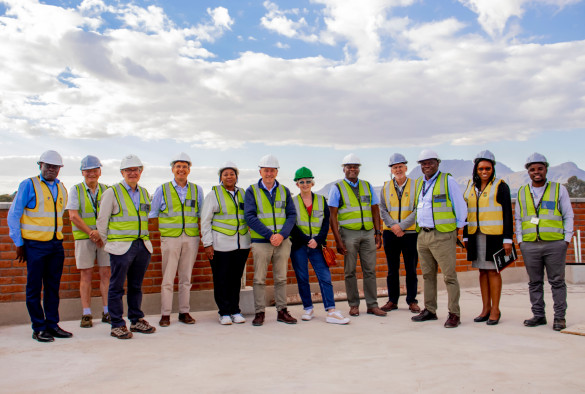Senior leaders from the University of Liverpool visited the Malawi-Liverpool Wellcome Programme (MLW) in Blantyre, Malawi last week to see the latest developments in research, facilities and healthcare.
The University’s Provost and Deputy Vice-Chancellor Professor Richard Black joined Professor Louise Kenny and Professor Pete Clegg from the Faculty of Health and Life Sciences for the trip, which took in a number of facilities in Blantyre and further afield.
MLW was established by the University of Liverpool in partnership with the then College of Medicine of Malawi (now Kumuzu University of Health Sciences), in 1995 to conduct internationally excellent science to benefit human health with a focus on sub-Saharan Africa.
Professor Louise Kenny said: “MLW is built around excellent laboratories, strategically located in the largest hospital in Malawi, Queen Elizabeth Central Hospital. It is closely linked with the community and these relationships provide a unique opportunity, replicated in few centres in Africa, to study major health issues spanning both community and hospital. We saw this for ourselves when we toured a field site in Chikhwawa District Hospital during our visit. Chikhwawa is on the banks of the Shire River and was badly affected by structural damage caused by Cyclone Freddy which tore through the region just over a year ago. MLW, with funding from the Wellcome Trust, quickly helped to rebuild key infrastructure which enabled the hospital to continue to provide care through a very traumatic time for the country.”
The group met with a range of University of Liverpool researchers who are working on conditions ranging from maternal sepsis, a key cause of death in young mothers in Malawi, through to vaccine development for two different clinical syndromes caused by different kinds of Salmonella.
They also toured MLW’s flagship new Clinical Research Excellence and Training Open Resource (CREATOR) building, which will officially open later this year.
Click here to visit the MLW website.
